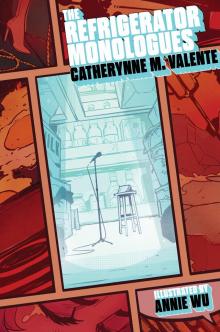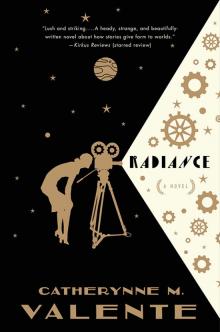


TV Development Guide, Page 6
Stephanie Varella
ilar to a book report. The reader can be an assistant or lower level
executive or an outside freelance reader.
The format includes:
• The logline (which is one or two lines about the project)
• Character breakdown
• Synopsis
• Comments
• A “pass” (doesn’t want) or “consider” (does want) recommen-
dation.
For a writer or producer, getting good coverage on your script can
be extremely beneficial. It will usually get agents and/or man-
agers to help you.
HOW AN IDEA BECOMES A SCRIPT
The following applies to writers working with a studio and/or
network attached. For independent development, see “Indie Deve-
lopers” below.
This is the seven-step process an idea goes through to become a
script:
1. Story Area
2. Outline
3. First Draft
4. Notes
5. Second Draft
6. Notes
7. Final Draft
1. ‘Story Area’
!65
Act 2
As we explored in the last chapter, the idea or concept can come
from the writer, development executive, network executive, an IP,
or anyone.
After a network commissions your script, the first step is to
present the general story area of the pilot episode, which should
be a few paragraphs or, at most, a page.
2. Outline
This is a very detailed document where the writer elaborates sub-
stantially about the pilot episode. The format for a one-hour
broadcast network and basic cable outline consists of the teaser
plus acts one through five, scene by scene. In the 1990s, when I
started working in this business, TV shows had four acts; one
every 15 minutes. It was modeled this way to make room for
commercials. There is question if this will change in the future.
Here’s how it works:
The teaser leads you into the first commercial break. Act one lasts
about 15 to 18 minutes. Act two gets you to around the half-hour
mark/commercial break. Act three and four break up the last half
hour. Act five is usually a short act at the end that will have a big
reveal. This will end the story of that episode, or it will have a big
twist that propels you on to the next episode.
Several years ago the networks decided to change this format, ad-
justing the start and stop times of shows. This way, viewers didn’t
even realize they were watching the network’s next show. It
worked, so they have all adapted this new five-act structure.
Side note: When I was young viewer, I would get frustrated with
the commercial breaks. At that time, of course I didn’t know why
there were commercials, so I would change the channel hoping to
watch another show. But I found that the competing shows ran
their commercials at the same time! I used think, “Why don’t
they run them at different times so people can watch more than
!66
Act 2
one show?” I know now they didn’t want viewers to be able to
watch other programs so they planned to have breaks at the same
time.
But television is ever-changing. With new technology, including
the invention of the DVR, viewers can now watch shows whenev-
er they want completely devoid of commercials.
Over the years, I have found that even though the outline gives
more detailed information about the show, there is a fine line as to
how much to give. This document must include every scene you
plan to have in your pilot; however you don’t want to get bogged
down in the minutia. There are some times when less is more.
It is also important to remember that outlines are sales documents
and should be treated as such. You don’t want to un-sell the
project before it even becomes a script.
When the writer is done with the outline, she or he will submit it
to the producer to get their notes before handing it to the studio
attached to the project. Then, when everyone is happy, it is sub-
mitted to the network.
It is not uncommon, even after getting notes from the network ex-
ecutive(s), for them to change their minds. Trying to please them
is often futile, but you have to keep in mind that they are your
buyer. You should do your best to stay true to the show’s vision,
but be collaborative and inclusive with the studio and/or net-
work. Remember, it doesn’t matter where good ideas for your
show come from as long as it keeps the momentum going and im-
proves the show.
FOR INDIE DEVELOPERS:
If you are an independent producer, or a development executive for a pro-
ducer who is working directly with a writer without a studio, it is ideal if
the writer is willing to give you an outline before writing the script.
(That is, if the writer is not being compensated. If she or he is being
!67
Act 2
compensated, it will probably be included in the deal). This will help to
avoid unnecessary rewrites of the script.
If you are the writer, I would encourage you to not skip this step. Some
writers are so excited about their script that they feel this may be an un-
necessary step. But, on the contrary, it is absolutely critical. Imagine if
you wrote the entire script only to discover that it doesn’t work and you
don’t know why.
By doing this detailed outline, you will get a blueprint of your script that
can be easily revised at this stage. After the script is written, it will be
much harder and more tedious to rework. It’s like building a house with-
out first doing the blueprints.
Once everyone is happy with the outline, the writer can move on
to the third step of the process.
3. First Draft
This is the first pass of the pilot script for the TV series.
It is first sent to the producer, if one is attached. It is the produc-
er’s job to give the writer feedback on how to make the script bet-
ter. If there is no producer attached, it will go directly to the stu-
dio. They will give notes to the writer before this first draft is sent
to the network.
It is not unusual for writers to rewrite their first draft several times
before sending it into the studio and/or network.
4. Notes
This is the step in the process when the network gives notes to the
writer.
I would like to point out that since the producer and/or studio
already gave the writer their notes before the first draft was hand-
ed in to the network, they would not want to give more notes at
!68
Act 2
this point because they wouldn’t want to overwhelm the writer.
This is the time for the network to give their thoughts (notes). If
indeed the producer and/or studio have further suggestions, they
would not tell the writer until after they receive the network’s
notes. They would not give the writer any more notes during the
phone call or the meeting with the network.
Once the writer receives the notes from the network executi
ves,
the writer can proceed to the fifth step in the process.
FOR INDIE DEVELOPERS:
The producer gives notes to the writer after receiving the first draft. If
the producer finds many, or significant, structural changes/thoughts,
then they might suggest the writer do another outline. It may save time
in the long run because you can see if the changes will track before the
writer makes the shifts within the draft.
5. Second Draft
Once the writer hands in this important second draft, it is the pro-
ducer’s job to make sure the writer included and executed the
network’s notes. When the producers/studio feel it is ready to
share with the network, they will send it in.
It is quite possible for the writer to go through another couple of
more drafts at this stage. If all is going well, the script is improv-
ing and moving forward. Your TV show is getting closer to being
realized.
The second draft is now submitted to the network. The writer,
producer and studio all await word from the network.
6. Notes
This step is the network’s last chance to weigh in and give any
other thoughts about the script before getting the last, most im-
!69
Act 2
portant version of the script. Before submitting the final draft to
the network, the producer and the studio have one last chance to
give the writer any more thoughts about changes to the script.
FOR INDIE DEVELOPERS:
The producer gives the writer his or her thoughts about this revised sec-
ond draft.
7. Final Draft
This final draft is the one that the writer, the producer, studio and
network executives should be most proud of and excited about. It
is the vision of the show in its realized scripted form. It is the be-
ginning.
If your script is good enough, and the timing is right, you will find
out if your project will be produced, find a life, and exist beyond
the pages. This draft is the essence of your TV show.
FOR INDIE DEVELOPERS:
This final draft is the one the writer and producer are most satisfied with
and excited to send out to the networks.
HOW DO PRODUCERS AND EXECUTIVES GIVE NOTES?
The cardinal rule is to first tell the writer what you like the most
about the script! Lay out what is working, and then you can get
into all your other thoughts and concerns. After you talk about all
that the writer accomplished well, you would then go over the
script in this order:
1. Overview and general notes (What is this script about? What
can be done to make it resonate better?)
2. Tone (Is it a campy or straight forward show?)
!70
Act 2
3. Character notes/concerns (This includes the arcs, descriptions,
etc.)
4. Plot issues (What is the story? Does it move forward? Are there
surprises?)
5. ‘Page notes’ and Typos (small notes you have on a page)
Side note: People often ask me the difference between good writ-
ers and great writers. I believe good writers can write fantastic
first drafts, but great writers are able to make good use of the
notes they receive. They are open to constructive criticism and
can adjust their work to make it better.
HELPFUL NOTES VS. HARMFUL NOTES
HELPFUL NOTES
The most important and useful way to give notes is being able to
communicate your thoughts without offending the writer. Some
ways to be constructive are:
• Ask for clarification if you don’t understand what the writer is
trying to convey.
• Ask to understand the motivation for a character on some-
thing that she or he is doing.
• Give examples on how to fix the problem that you are bring-
ing up. Remember you are a team.
• Ask, don’t tell. Discuss your thoughts.
HARMFUL NOTES
If there is something in the script that isn’t working for you, tell
the writer in a non-threatening and constructive way.
!71
Act 2
Examples that can hurt the process:
1. When giving notes for a comedy script, don’t say that some-
thing is not funny. Most of the time with comedies, how the
actor says his or her lines will make all the difference as to
what is funny or not. Also, humor is extremely subjective.
Funny to one person may not be funny to another.
2. Being general and not specific will not help the writer. It’s im-
portant to start with general concerns but, in order to get your
point across, you will need to follow up with very specific ex-
amples.
3. Never tell a writer to change something just because you say
so. It is important to remember that this is their show, their
vision. Your job is to let them know if they are not getting that
vision across to readers.
4. Be clear in your points. The more the writer can understand
the issues you are bringing up the better. In order for the
writer to be able to make adjustments to the script, she or he
has to completely appreciate the problem(s) you are having.
Both you and the writer do not have to have the entire solution
figured out at this point. Many times, the writer will need to take
some time to figure out how to change it.
*****
!72
Act 2
Assignments
Get your hands on a script! Where to find one? You can get sam-
ples at your local library and the Writers Guild of America’s
(WGA) offices. You can ask your friends, relatives, co-workers,
and even find them online. They are out there.
Read the script and make your notes on it. Work to improve it.
If the script is really good you may find it hard to come up with
notes. Don’t force it. Sometimes it is harder not to give notes and
appreciate a good script for what it is.
Other times a script can be way off base and you don’t even know
where to start. Refer back to the section, ‘How Do Producers and
Executives Give Notes,’ which will give you the tools. It’s always
best to start with the bigger, more general thoughts and concerns,
and then make your way to the specifics notes. Also always give
examples when giving notes in order to explain it better.
Write your thoughts down as if you were going to give them to
the writer. Writing down your notes will force you to be clear
about what you are saying. Also, it will come out better than if
you said it directly to the writer because you will have time to ad-
just it, make it more clear, etc.
After you’ve done that, see if you can give these ideas and
thoughts to the writer. Find out if you are able to convey your
ideas in a way that make sense to the writer. Did the writer agree
with all or any of your notes? Did she or he argue with you? Did
she or he have good points that counter your notes? Did you feel
after the session that the script is going to get better?
If the writer does another draft of the script, you may be able to
tell i
f your notes made it better. But remember that sometimes, if
the script doesn’t get better, it doesn’t mean your notes weren’t
good. It could mean that the writer did not understand what was
!74
Act 2
not working for you, or maybe you thought it was one issue but it
turned out to be something else. These are common reasons why
many times a great idea does not go past the script phase of de-
velopment. It is heart-breaking because so much work and
thought is put into a project and it just doesn’t get there.
It’s important to keep at it. Don’t give up!
As long as the writer is passionate and willing to work on it, the
producer should as well. Keep thinking of the old adage, “The
show must go on!”
*****
!75
ACT THREE
The Market Place
THE NETWORKS
In every field there are buyers and sellers. As the writer or pro-
ducer of a TV script/idea for a TV series, or even the director or
actor attached to the project, you are the seller. The networks are
the buyers. It is where your ideas for your show will find its
home, come alive and belong. This chapter examines the impor-
tance of understanding how the networks operate and what they
are looking for.
THE BUYERS:
Here is the current list of outlets that are actively buying scripted
content at the time of this printing:
ABC, APPLE, ADULT SWIM, AMAZON, AMC, AUDIENCE,
BBCA, BET, BRAVO, CBS, CBS: ALL ACCESS, CINEMAX,
!77
ACT 3
COMEDY CENTRAL, CRACKLE, CW, DISCOVER, DISNEY,
DISNEY JR., DISNEY+, E!, EL REY, EPIX, FACEBOOK, FBC
(FOX), FREEFORM, FX, FXX, HBO, HISTORY, HULU, IFC,
LIFETIME, LOGO, MTV, NATGEO, NBC, NETFLIX, NICK-
ELODEON, NICK JR., OWN, PARAMOUNT, SHOWTIME,
STARZ, SUNDANCE, SYFY, TBS, TNT, USA, WE TV, YOU-
TUBE RED
As you can see, there are a plethora of places to sell your project.
KNOW THE AUDIENCE AND THE NETWORK
The two most important factors to learn when researching buyers
are:
1. Who is their audience?
2. What is their brand?
These distinctions will inform you as to where to take your
project. Knowing the demographics of your show and the demo-
graphics the network wants to reach will be a great help in leading
you to your goal. Understanding what shows each network cur-
rently develops and the differences between them will also guide














